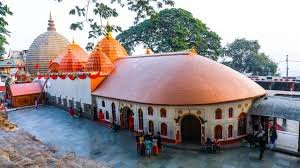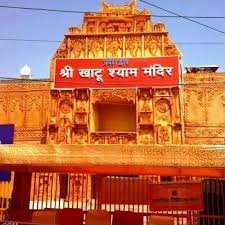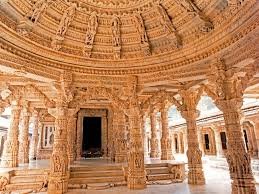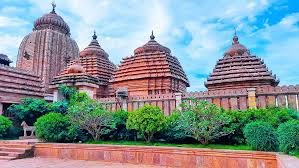Kamakhya Temple, one of the most revered Hindu temples in India, stands atop the Nilachal Hill in Guwahati, Assam. Dedicated to Goddess Kamakhya, this temple is an essential Shakti Peetha and holds immense spiritual significance. Devotees from across the world visit this sacred site, seeking blessings and experiencing its divine energy.
This temple is famous for its unique rituals, rich mythology, and breathtaking architecture. Unlike other temples, it does not house an idol but enshrines a natural rock fissure believed to symbolize the goddess’s presence.
The Mythological Significance
The Kamakhya Temple is deeply rooted in Hindu mythology. It is associated with the legend of Goddess Sati and Lord Shiva. According to the Puranas, Sati, the consort of Shiva, self-immolated in grief when her father, King Daksha, insulted her husband. Overcome with sorrow, Shiva carried her lifeless body and performed the cosmic dance of destruction. To pacify him, Lord Vishnu dismembered Sati’s body using his Sudarshan Chakra. The places where her body parts fell became the 51 Shakti Peethas.
Kamakhya Temple marks the spot where Sati’s womb and reproductive organs fell, symbolizing feminine energy and fertility. This belief makes the temple a powerful center for Tantra worship and spiritual awakening.
Unique Rituals and Traditions
One of the most fascinating aspects of Kamakhya Temple is its Ambubachi Mela, an annual festival celebrated in June. This event marks the goddess’s menstrual cycle, signifying fertility and the power of creation. During this time, the temple remains closed for three days, and devotees believe that Mother Earth undergoes a natural cleansing. On the fourth day, the temple doors reopen, and thousands of worshippers gather to receive the goddess’s blessings.
Unlike many Hindu temples, Kamakhya does not have a traditional idol. Instead, devotees worship the yoni-shaped rock, which is constantly covered with water from a natural underground spring. This representation highlights the temple’s deep connection to Shakti (divine feminine power).
Architectural Splendor
The Kamakhya Temple complex showcases an exquisite blend of Nagara and Ahom architectural styles. The current structure, built by the Koch dynasty in the 17th century, features intricate stone carvings, domes, and a beehive-shaped shikhara (tower). The temple walls depict various deities and mythological scenes, reflecting the region’s artistic heritage.
The sanctum sanctorum, known as the Garbhagriha, is a small underground chamber where the sacred rock is worshipped. Surrounding the main temple are smaller shrines dedicated to different forms of Goddess Kamakhya, including Bhuvaneshwari, Bagalamukhi, and Tara. These shrines further enhance the temple’s spiritual aura.
Spiritual and Tantric Significance
Kamakhya Temple is considered the epicenter of Tantric worship. Tantra, a mystical branch of Hinduism, emphasizes the worship of Shakti and the union of divine energies. Many sages and sadhus visit the temple to perform intense meditation and rituals, seeking spiritual enlightenment.
The temple is also a prime destination for Tantric practitioners who believe that Kamakhya’s divine energy grants siddhis (supernatural powers). Devotees perform various Tantric rites to attain wisdom, prosperity, and divine blessings.
Festivals and Celebrations
Apart from Ambubachi Mela, Kamakhya Temple hosts several other festivals throughout the year:
- Durga Puja – Celebrated with grandeur, marking the victory of Goddess Durga over Mahishasura.
- Manasha Puja – Devoted to Goddess Manasha, the serpent goddess who grants health and prosperity.
- Navaratri – Nine days of devotion to the goddess in different forms of Shakti.
Each festival brings thousands of pilgrims, turning the temple into a vibrant spiritual hub.
How to Reach Kamakhya Temple
Kamakhya Temple is easily accessible from different parts of India.
- By Air: The nearest airport is Lokpriya Gopinath Bordoloi International Airport (Guwahati), about 20 km away.
- By Train: Kamakhya Railway Station is just 5 km from the temple, while Guwahati Railway Station is about 8 km away.
- By Road: The temple is well-connected by road, and taxis, buses, and auto-rickshaws are readily available.
Upon reaching the Nilachal Hill, devotees need to climb a few steps or take a vehicle to the temple entrance.
Best Time to Visit
The best time to visit Kamakhya Temple is from October to March, when the weather is pleasant. However, if you wish to experience the grand Ambubachi Mela, plan your visit in June. Early mornings are ideal for a peaceful darshan, as the temple gets crowded later in the day.
Nearby Attractions
Guwahati offers several attractions that complement a visit to Kamakhya Temple:
- Umananda Temple – Located on Peacock Island in the Brahmaputra River.
- Navagraha Temple – Dedicated to the nine celestial deities.
- Pobitora Wildlife Sanctuary – Famous for its one-horned rhinoceros.
- Assam State Museum – Showcasing Assam’s rich cultural heritage.
- Brahmaputra River Cruise – A relaxing way to explore the beauty of Guwahati.
These sites provide a perfect blend of spirituality, history, and nature.
Conclusion
Kamakhya Temple stands as a beacon of faith, mysticism, and divine energy. Its historical significance, unique rituals, and breathtaking architecture make it one of the most extraordinary temples in India. Whether you are a spiritual seeker, history enthusiast, or traveler, a visit to Kamakhya Temple promises an unforgettable experience.
The divine presence of Goddess Kamakhya continues to inspire millions, reminding us of the eternal power of Shakti. So, if you seek spiritual awakening or wish to witness one of the most sacred places in Hinduism, Kamakhya Temple in Guwahati awaits you with open arms.





